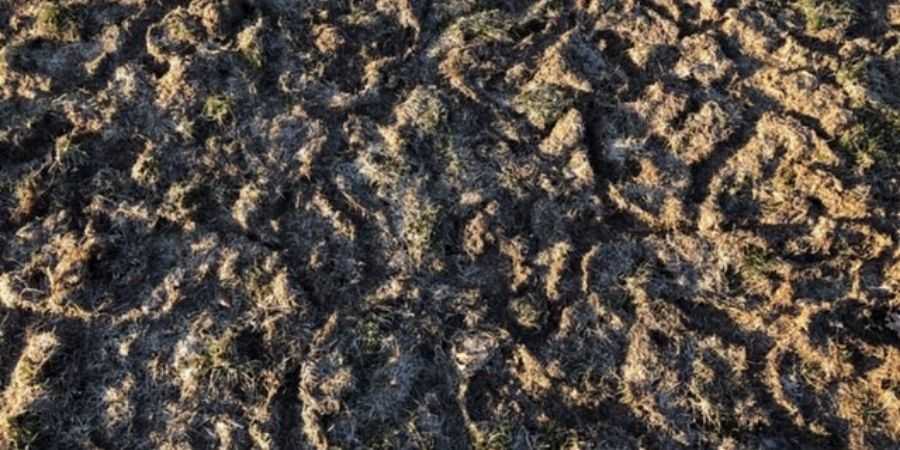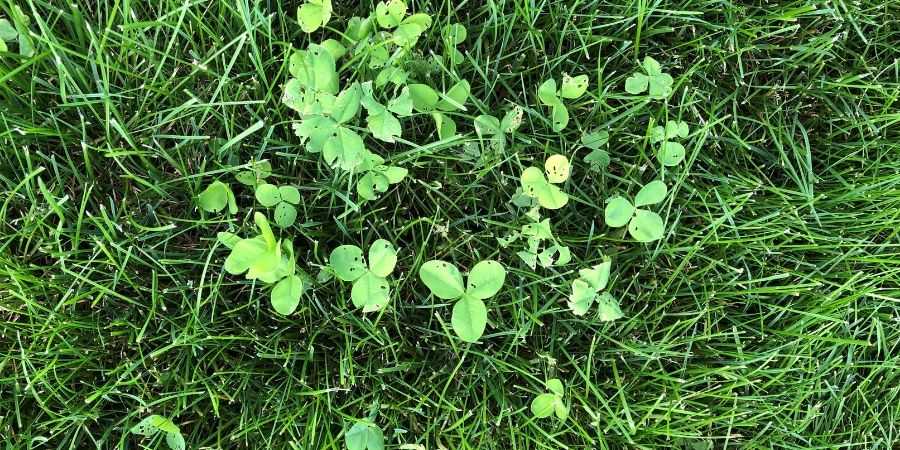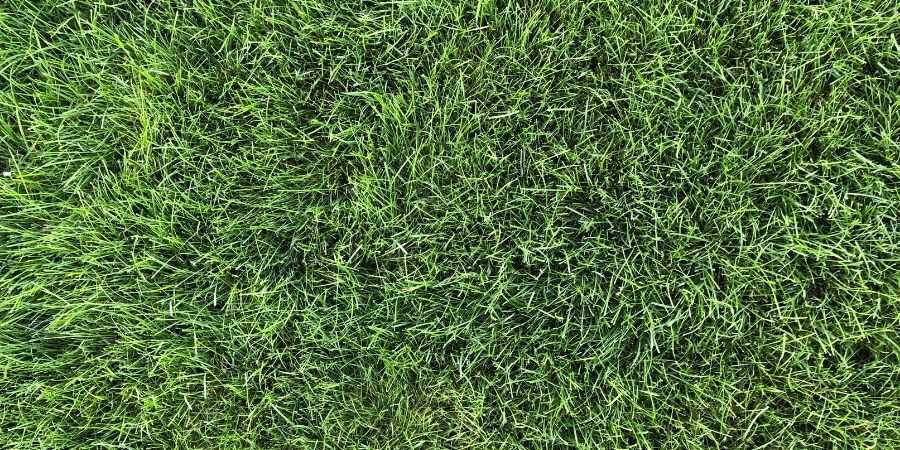From Seed to Lawn: Year Two Update
- Milorganite AgronomistJune 29, 2019
From Seed to Lawn: The Adventures of One Homeowner
Experiences and lessons learned from starting a new lawn from seed

The adventure began fall 2017 when I started my new lawn from seed under the worst weather conditions possible. Wisconsin weather in 2018 can best be characterized as erratic. The extreme summer temps were ridiculous and stressed the fledging lawn. The frigid winter nearly froze everyone and everything!
Here’s a recap of the challenges my new lawn from scratch faced in its first full year and how I addressed them. It survived every challenge.
Drought
Drought conditions started in June 2018 and by the first week of July, the weather had turned ungodly hot. We were in a full-fledged drought. I didn’t water the lawn. I left it alone.
Allowing the lawn to go dormant in drought conditions is my preference. It’s better for the lawn to go dormant than watering sporadically or too little. Light watering during drought conditions can actually do more harm than good.
The drought conditions weren’t detrimental to the lawn. Allowing it to go dormant was the best option.
Weeds
The intense summer heat and drought conditions stressed the lawn, causing it to thin—an invitation to weed seeds looking for a home. The empty lot next door continues to be the primary source of weeds and the seeds are freely offered to our lawn.
My lawn was being overrun by weeds. And not just common, run-of-the-mill dandelions and such. These were noxious weeds, like thistles, and others I couldn’t even identify.
I finally conceded in mid-August, during a period of “cooler” weather, and hired a landscaping company to apply an herbicide to address the weed problem. It was just before the weather jumped back into the ‘90s. It’s not my preference to use herbicides, but there are situations, like this one, where it’s the best option. There are too many weeds to dig out by hand or eliminate using any other method short of an herbicide application. It was important to me to protect my investment!
Overseeding
I wanted to thicken-up my lawn as much as possible. Once the temperature finally started to cool off in fall, I heavily overseeded the lawn with a grass-seed mix. (I’ll admit it. I overseeded using more grass seed than recommended.)
Fertilizing
During the first few years of establishing a new lawn, it’s important to build up the nutrients in the soil. I fertilized with Milorganite following the recommended schedule of Memorial Day, 4th of July, Labor Day and applied a dormant feeding around Thanksgiving.
Winter 2018–19: The tundra descends.
Referring to this past winter as “terrible” doesn’t capture the epic, arctic-vortex cold we experienced. Temperatures frequently plunged into the negative digits and there was also prolonged snow cover into spring. Lawns don’t appreciate either. We also had several freeze-thaw episodes: snow, thaw, freeze, repeat… which is also detrimental to plants.
Spring 2019
This spring was a continuation of winter’s erratic weather. It was cold, we had more snow, far too much rain and it took forever to warm up. Despite all of the un-spring-like weather, the lawn came in fairly nice and thick. It’s a survivor.
Moles
Over winter, I kept seeing one of our dogs burying his head in snow piles. Then I’d see him playfully flinging something into the air. I knew it was. Moles.
Once the snow melted my suspicions were confirmed by the tell-tale mole damage. There were tunnels throughout the front of the property. They caused a lot of damage and destroyed about 1/3rd of my front yard.
The moles likely came from from the prolonged snow cover and the adjoining lot—the same lot that has graciously donated the noxious weeds to our lawn. It’s covered in tall grass, which provides a safe refuge for moles.
I raked the damaged areas and overseeded in early summer. I do not plan on treating for moles next fall because hopefully there will not be extended snow cover and tall grass in the empty lot. Repairing the dead spots caused by the moles is on my list of yard tasks.
Fertilizing
There’s some clover in the lawn, which I don’t mind, but it’s a sign of low nitrogen. I’m really focused on building-up nutrients in the soil. The fill and soil brought in after the house was built were nutrient deficient, which is usually the case. (That’s my nice way of saying it was really crappy soil.)
I fertilized with Milorganite around Memorial Day. It’s going to take a few years to build up nutrients, but I'll follow Milorganite's recommended schedule.

Weeds
I don’t mind having a few weeds and clover in my lawn, but I’m going to do what I have to do to prevent weeds from taking over. Although I’m not a big fan of using chemicals on my lawn, I was faced with protecting my investment. And starting a new lawn from seed was definitely an investment!
I hired a landscape company in late-spring to apply an herbicide to kill the weeds. This fall I will evaluate the lawn for weeds again, but I don’t anticipate having to treat the lawn again (fingers crossed).
Overseeding
I waited six weeks after the herbicide was applied before I overseeded the mole damaged areas. Overseeding too soon after an herbicide application may inhibit the seeds from germinating or kill them shortly after.
Exactly how long to wait to overseed after an herbicide application depends on the active ingredient and how it works to kill weeds. Read the information provided by the manufacturer carefully to determine how long it’s best to wait before overseeding.
Grubs
I was digging out some of the many weeds in May and discovered another issue: grubs.
It wasn’t a huge infestation, but just to be safe, I decided to hire a company to apply a clothianidin-based insecticide in early-June. Clothianidin is one of only a few insecticide active ingredients that can effectively prevent future generations of grubs by 75–100%.
Judicious Use of Chemicals
As I said, I’m not a big fan of using chemicals on my lawn and clearly, despite my aversion to using both herbicides and pesticides, there are situations where I feel their use is appropriate. I use them judiciously and not as my first line of attack. I recommend everyone do the same.
To help protect the environment, always closely follow manufacturer instructions, as well as community guidelines and restrictions, before applying anything to your lawn, including Milorganite.
This fall I’m planning to aerate the lawn for the first time and overseed. Although it might be overkill to overseed yet again, I really want to help the lawn fill-in. (Maybe I’ll just do a light overseeding.) A thick, healthy lawn is the best protection against weeds and pests, which will ultimately reduce or eliminate the need to use herbicides and pesticides.

Despite terrible weather, nutrient-poor soil, tunneling moles and hungry grubs, I have the thickest lawn I’ve ever had! Starting a new lawn from seed continues to be a challenging, yet satisfying, learning experience.
I’ll keep you posted.

